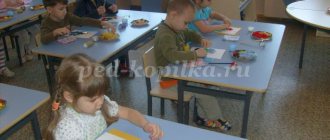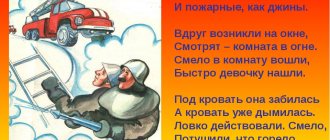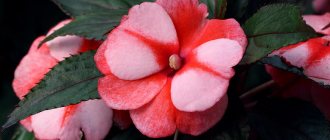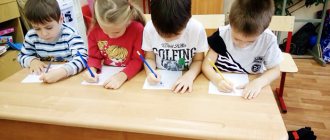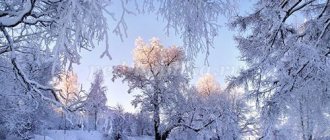Conversation “Uncharted Space”
author: Kireeva Veronika Nikolaevna
Teacher of MBDOU "Kindergarten" Rainbow "combined type" JV "Kindergarten No. 4 combined type" Ruzaevka
Conversation “Uncharted Space”
Conversation on the topic “Cosmonautics Day”
Prepared by: Veronika Nikolaevna Kireeva
Second junior group
Goal: acquaintance with space, the first cosmonaut.
Tasks:
Educational: to form children’s understanding of planet Earth, to introduce the first cosmonaut Yu. A. Gagarin.
Developmental: expand children’s ideas about the profession of an astronaut pilot, stimulate the development of speech, memory, thinking, develop imagination and fantasy.
Educational: to instill respect for the profession of an astronaut, to teach respect for planet Earth.
Progress of the conversation:
(The teacher starts the conversation)
Earth is the planet on which we live, it is the only planet in the solar system on which life exists. People, plants and animals live on Earth because there is water and air. It revolves around the Sun and is the most beautiful and interesting of all the planets. The Sun is the closest star to Earth. Without the Sun there would be no life on Earth. Everything that happens on our planet is connected with the Sun: the change of day and night, the onset of winter or summer. During the day, the sun warms and illuminates our planet. All living things rejoice in sunlight and warmth. With the sunrise, nature awakens and comes to life.
In the evening we can see the moon and stars in the sky. The Moon is the Earth's satellite. It shines brightly in the night sky. People have always wanted to visit the moon, fly to the stars, and see the Earth from space.
— Would you guys like to become astronauts?
—Who are astronauts?
-What do you think an astronaut should be like? (healthy, strong, knowledgeable, hardworking, courageous, resilient, etc.).
-What can you see in the sky? (stars)
- How many stars are there in the sky? (so many)
People wanted to know if there was life on other planets. What creatures live there, are they similar to us, is there air on other planets. But to find out, you must fly to them. Airplanes were not suitable for this. Who knows why? (because the planets are very far away). And so scientists invented the first satellite, installed instruments on it and launched it into outer space. There were two dogs on board - a squirrel and an arrow, they successfully returned to Earth. And then in 1961, the first man went into space.
The first person who was able to go on a space journey was cosmonaut Yuri Alekseevich Gagarin. He made his flight on April 12, 1961 on a Vostok rocket. On this day our country Fr. This is a holiday of astronauts and people who participate in the creation of space rockets.
Physical exercise "Rocket".
One, two - there is a rocket (hands up)
Three, four - airplane (arms to the sides)
One, two - clap your hands
And then on every account.
One, two, three, four - and they walked around in place,
Tick-tock, tick-tock - all day like this (hands on waist, bending to the side)
Didactic game “Family of Words”.
Let's play and form words from one family for the word "star".
- How can you affectionately call a Star? (star)
- If there are many Stars in the sky, then we will say what it is like? (stellar)
- What is the name of the ship that flies to the stars? (starship)
- What do they call a wizard in fairy tales who predicts the future from the stars? (astrologer)
Well done! Today you have learned a lot about space, astronauts, about our planet, and I think that you can be enrolled in the cosmonaut corps.
Summary of the conversation.
Questions:
- What is the name of our planet?
- What is the sun for?
- When can we get a good look at the moon?
- What was the name of the man who first flew into space?
Conversation “Uncharted Space”
Goals:- systematize and expand children’s understanding of what space is;
- help consolidate acquired knowledge and broaden children’s horizons;
- develop memory, attention, desire to learn new things.
Methods used in the lesson:
- video method (during the entire event);
- verbal;
- practical;
- problem-search (collection of material);
- self-control and mutual control (consolidation of what has been learned).
Forms of work:
- frontal;
- Individual.
Equipment:
- Computer;
- Screen;
- Projector;
- Student reports.
Progress of the lesson
1. Organizational moment.
2. Work on the topic
April 12 is Aviation and Cosmonautics Day.
1st student.
Again the star lit up in the distance. Our new satellite flies next to the rough bulk of the Earth floating in space. And the fact that it burns in the darkness, And sends cheerful signals, speaks of an interplanetary, unprecedented, coming era. The path to the future has opened, and over these years we have been able to build happiness on the planet and further step into the skies.
Teacher:
Guys, guess the riddle: “The peas scattered on a thousand roads.”
(Starry sky.)
Every time we go out in the evening, we fix our gaze on the stars. How many interesting things they store. How you want to get up from the earth and embark on a journey to distant planets and maybe even meet the inhabitants of other planets.
2nd student.
Universe.
- The Universe is an immense world beyond the Earth.
- The universe was formed as a result of the so-called Big Bang 15 billion years ago.
- From matter that gradually cooled, planets, stars, galaxies, comets and other celestial bodies were formed.
3rd student.
Galaxies.
- Galaxies are giant collections of stars, gas and dust held together by gravity.
- Galaxies revolve around a central point.
- There are billions of galaxies in the universe and each contains from one to tens of billions of stars.
- Galaxies are located in groups, forming clusters of hundreds and thousands of galaxies.
4th student.
Stars.
- The stars shining in the night sky are bodies of hot gas.
- Stars study with bright light because their temperatures reach 10 million degrees.
- The color of stars depends on their size and temperature. The largest and hottest ones emit a bluish light, while the smallest ones are white, yellow, orange or reddish.
- The brightness of a star depends on its distance from the Earth; the closer a star is to us, the brighter it appears.
5th student.
Comets.
- Comets are small cosmic bodies consisting of ice, dust and rocks.
- They revolve around the Sun in highly elongated elliptical orbits.
- Passing near the Sun, a comet loses one cm of the thickness of its shell per day.
- Any comet is destined to disappear over time.
6th student.
Sun.
- The Sun is the star closest to Earth.
- The sun is a giant ball of hot gases.
- The sun is the center of the solar system, of which the Earth is a part.
- The sun was formed about 5 billion years ago. And it will shine for the same number of years.
- The sun rotates around its axis.
7th student.
Planets.
- There are 9 planets with 68 satellites, billions of asteroids, meteorites and comets, as well as a huge amount of dust and gas moving around the Sun.
- Nine large planets move around the Sun.
- Each planet moves along its own path - orbit, around the Sun.
- The sun, together with the large and small planets, makes up the solar system.
- People live only on Earth; there are no living beings on other planets.
- Astronauts did not fly to other planets. They are studied using automatic interplanetary stations.
8th student.
Moon.
- The Moon is not a star or a planet, but a large stone ball, several times smaller than the Earth.
- She is a satellite of the Earth, the celestial body closest to Earth.
- There is no water or air on the moon. You can't live on the moon.
- On the surface of the Moon during the day it can be hot up to 130 degrees, and at night it can be cold up to 170 degrees.
- The Moon moves around the Earth and goes around it in a month.
Interest in space.
Teacher:
After man invented the airplane and conquered the sky, people wanted to rise even higher.
1st student.
One of the first to think about flying into space was the Russian scientist Konstantin Eduardovich Tsiolkovsky. The fate and life of Tsiolkovsky are unusual and interesting. The first half of Kostya Tsiolkovsky’s childhood was ordinary, like all children. Already in old age, Konstantin Eduardovich recalled how he liked to climb trees, climb onto the roofs of houses, jump from great heights to experience the feeling of free fall. My second childhood began when, having contracted scarlet fever, I almost completely lost my hearing. Deafness caused the boy not only everyday inconvenience and moral suffering. She threatened to slow down his physical and mental development. He dreams of space travel. He voraciously reads books on physics, chemistry, astronomy, and mathematics. Realizing that his capable but deaf son will not be accepted into any educational institution, his father decides to send sixteen-year-old Kostya to Moscow for self-education. Kostya rents a corner in Moscow and sits in free libraries from morning to evening. His father sends him 15–20 rubles a month, but Kostya, eating black bread and drinking tea, spends 90 kopecks a month on food! With the rest of the money he buys retorts, books, and reagents. The following years were also difficult. He suffered a lot from bureaucratic indifference to his works and projects. I was sick and discouraged, but I got myself together again, made calculations, and wrote books. Now we already know that Konstantin Eduardovich Tsiolkovsky is the pride of Russia, one of the fathers of astronautics, a great scientist. And with surprise, many of us learn that the great scientist did not go to school, did not have any scientific degrees, in recent years he lived in Kaluga in an ordinary wooden house and no longer heard anything, but throughout the world the one who first drew for humanity's path to other worlds and stars:
2nd student.
Tsiolkovsky’s ideas were developed by Friedrich Arturovich Zander, a Soviet scientist and inventor in the field of the theory of interplanetary flights and jet engines.
3rd student.
Yuri Vasilyevich Kondratyuk - proposed that when flying to other planets, the ship should be placed in orbit of its artificial satellite. To land a person on another planet and return to the ship, use a small take-off and landing ship
4th student.
All the most cherished dreams of the founders of astronautics were realized by Sergei Pavlovich Korolev, a Russian scientist and designer, academician, twice Hero of Socialist Labor. Under his leadership, ballistic and geophysical rockets, the first artificial Earth satellites, and the Vostok and Voskhod spaceships were created, which were used for the first time in history in human space flight and human spacewalk.
5th student.
October 4, 1957 became a significant date. On this day the first artificial Earth satellite was launched. The space age has begun. The first satellite of the Earth was a shiny ball made of aluminum alloys and was small - with a diameter of 58 cm and a weight of 83.6 kg. The device had a two-meter mustache antenna, and two radio transmitters were placed inside. The satellite's speed was 28,800 km/h. In an hour and a half, the satellite circled the entire globe, and during the 24-hour flight it completed 15 revolutions. Nowadays there are many satellites in earth's orbit. Some are used for television and radio communications, others are scientific laboratories.
6th student.
Scientists were faced with the task of putting a living creature into orbit. Scientists wanted to know what man would encounter in space. The first “cosmonauts” - scouts - were mice, rabbits, insects and even microbes. The first little mouse, the “cosmonaut,” stayed above the Earth for almost a whole day. But at that time, scientists still did not know how to return spaceships to Earth.
Dogs in space.
7th student.
And dogs paved the way to space for humans. Animal testing began in 1949. The first “cosmonauts” were recruited in the gateways - the first squad of dogs. A total of 32 dogs were caught.
The first dog sent into space was Laika. On November 3, 1957, a special spacesuit was put on Laika, a special rocket was built for her, which contained a supply of food, water and air. It was calculated that the dog would live on board for a week. It was for this period that supplies of food and oxygen were provided. And so that the animal does not suffer after the air runs out, the designers came up with a syringe with which a soporific injection will be given. But the dogs lived in zero gravity for only a few hours, the ship became very hot, and Laika died from the heat.
On August 19, 1960, the dogs Belka and Strelka flew into space from the Baikonur Cosmodrome. The dogs passed all types of tests. They can remain in the cabin for quite a long time without moving, and can endure large overloads and vibrations. Animals are not afraid of rumors, they know how to sit in their experimental equipment, making it possible to record the biocurrents of the heart, muscles, brain, blood pressure, breathing patterns, etc.
Footage of the flight of Belka and Strelka was shown on television. It was clearly visible how they tumbled in weightlessness. And, if Strelka was wary of everything, Belka was joyfully furious and even barked.
Belka and Strelka became everyone's favorites. They were taken to kindergartens, schools, and orphanages. Journalists were given the opportunity to pet the dogs, but were warned not to accidentally nip them.
On August 20, it was announced that the descent module had made a soft landing and the dogs Belka and Strelka had returned safely to the ground.
The scientist continued research and observations of dogs on Earth. It was necessary to find out whether space flight affected the genetics of the animal. Strelka twice gave birth to healthy offspring, cute puppies that everyone would dream of purchasing. But all the puppies were registered, and they were personally responsible for each one.
On March 9, 1961, Chernushka went into space. The dog had to make one revolution around the Earth and return - an exact model of human flight. Everything went smoothly.
On March 25, 1961, Zvezdochka launched. And she had to complete one revolution and land. The flight ended successfully. The dogs have done their job. They were never destined to go into space again.
Monkeys in space.
8th student.
In 1969, the Americans launched their first biological satellite with Boni the monkey. But unfortunately, on the fifth day of the flight, the instruments recorded a sharp drop in Bonya’s temperature. The animal was returned to Earth, but it was not possible to save her. On January 7, 1997, the flight of the Bion-11 satellite ended. For 14 days, two monkeys Krosh and Multik were in space. According to experts, all experiments were successful. Bio-objects have returned to earth and today scientists are processing the information received.
Yuri Gagarin.
9th student.
Born in the small town of Gzhatsk in 1934. He grew up as an active, inquisitive boy; he made airplanes from childhood. His passion for the sky led him to the Military Aviation School in Orinburg. In 1960 he began preparing for a flight into space. On April 12, 1961, the Vostok spacecraft was launched from the Baikonur Cosmodrome. Flew around the Earth once in 108 minutes. This flight proved that a person can fly into space and return to Earth unharmed.
Conquest of space.
10th student.
After Gagarin, hundreds of people flew into space. In 1965, Soviet cosmonaut Alexei Leonov was the first to walk into outer space. In 1969, American Neil Armstrong set foot on the moon for the first time. The Americans landed on the Moon five more times and made many valuable observations. German Titov spent 24 hours in orbit. The first female cosmonaut is Valentina Tereshkova.
11th student.
Titov German Stepanovich born September 11, 1935, Russian cosmonaut. Pilot-cosmonaut of the USSR, Colonel General of Aviation, Hero of the Soviet Union (1961). In the first group of cosmonauts of the USSR, German Titov was one of the best and was appointed Yu. A. Gagarin’s backup during preparation for the first space flight in history on April 12, 1961. In August 1961, German Titov made a space flight on Vostok-2, which lasted 25 hours. Later he left the cosmonaut corps and worked as a test pilot. Tragically died in 2000.
12th student.
Leonov Alexey Arkhipovich born May 30, 1934, Russian cosmonaut, USSR pilot-cosmonaut, Major General of Aviation, twice Hero of the Soviet Union.
Flight on Voskhod 2 with the first spacewalk in history (March 1965).
13th student.
Tereshkova Valentina Vladimirovna was born.
1937, Russian cosmonaut. Pilot-cosmonaut of the USSR, the world's first female cosmonaut, candidate of technical sciences, colonel, public figure, Hero of the Soviet Union. Flight on Vostok-6 (June 1963)
. Chairman of the Soviet Women's Committee. Since 1994, head of the Russian Center for International Scientific and Cultural Cooperation.
14th student.
Nikolaev Andrian Grigorievich (1929–2004), Russian cosmonaut, pilot-cosmonaut of the USSR, Major General of Aviation, Candidate of Technical Sciences, twice Hero of the Soviet Union. Flights on Vostok-3 and Soyuz-9.
15th student.
Soloviev Vladimir Alekseevich (born 1946), Russian cosmonaut. USSR pilot-cosmonaut, twice Hero of the Soviet Union. Flights on the Soyuz T-10, -11 and the Salyut-7 orbital station, Soyuz T-15, the Salyut-7 orbital station and the Mir orbital complex.
Savitskaya Svetlana Evgenievna (born in 1948), Russian cosmonaut, pilot-cosmonaut of the USSR, twice Hero of the Soviet Union, Honored Master of Sports. In the 60–70s. world champion and record holder in airplane and parachute sports. Flight on the Soyuz T-5, T-7 and the Salyut-7 orbital station.
16th student.
A special profession is astronaut.
- An astronaut is a person who tests space technology and works on it in space.
- The beginning of this profession was laid by the flight of the planet’s first cosmonaut, Yu.A. Gagarin.
- An astronaut is a researcher. Every day in orbit is experimental work in a space laboratory.
- The astronaut plays the role of a biologist, conducting observations of living organisms.
- An astronaut is a physician when they participate in medical research into the health of crew members.
- An astronaut is a builder, an installer.
3. Summary of the lesson.
– What did we talk about today? – What new did you hear and learn?
Download presentation (5.13 MiB)

